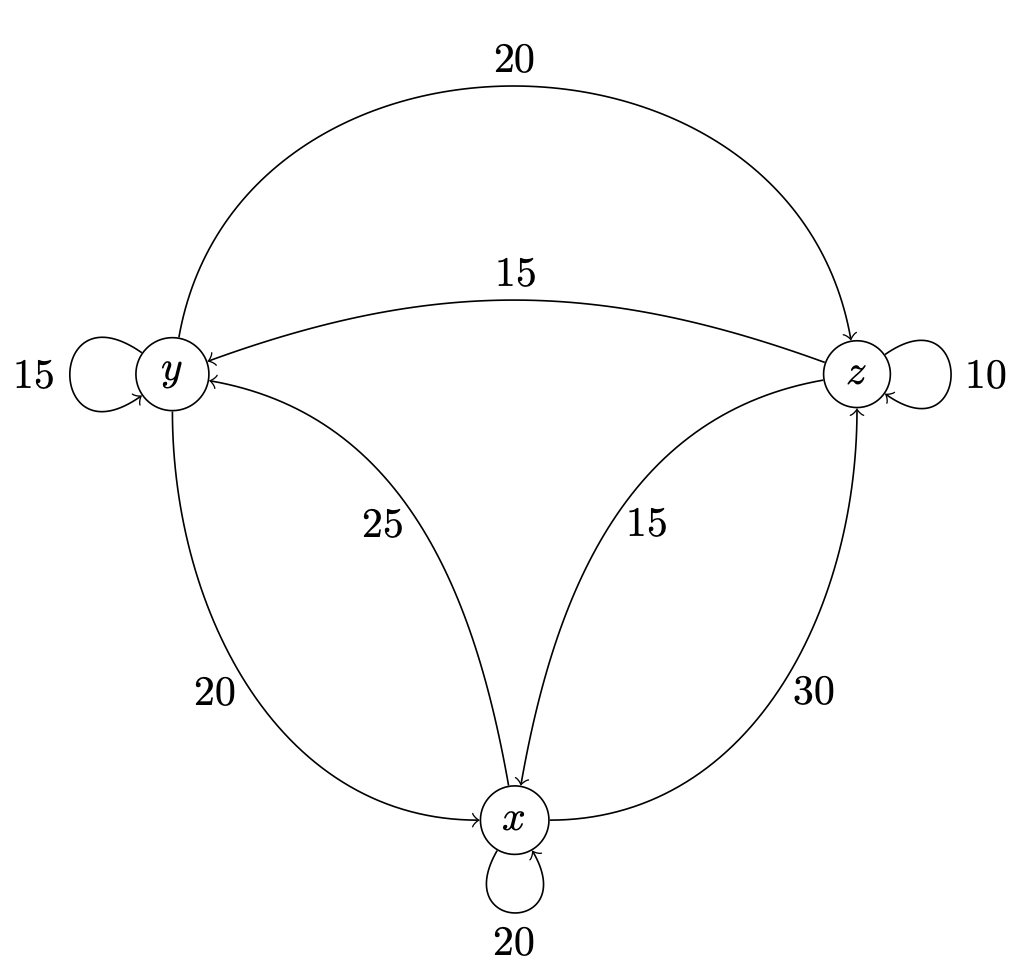14Week 49
14.1 Readings for this week's lectures
Sections 12.7, 13.1, 13.6 in the textbook.14.2 Readings for this week's exercises
Sections 12.1–12.3 and 12.5–12.6 in the textbook.14.3 Notes
Matrix operations
Two matrices are equal if they have the same dimension and all their elements are equal. Otherwise they are unequal.The sum of two matrices with the same dimension is obtained by adding elements in the same position:If is a matrix with dimension and is a matrix with dimension , then the matrix product is defined as:
This means that the element in row and column is the sum of products of the elements in row in
and the elements in column in .
Rules for matrix multiplication
14.4 Problems
Two matrices are given by:
1. Calculate .
Your answer: It is a
2. Calculate .
Your answer: It is a
Two matrices are given by:
1. Calculate .
Your answer: It is a
2. Calculate .
Your answer: It is a
3. Calculate .
Your answer: It is a
Compute the products AB and BA, if possible, when A and B are, respectively:
- and
- and
- and
- and
Two companies, A and B, compete for market shares in the telecommunications market. In the beginning, A has a third of the market and B has two thirds. But Danes often change their provider, so over the next year, and each year after that, the following changes happen:
- A keeps 90% of customers and lose 10% to B
- B keeps 60% of customers and lose 40% to A
- Show that is a market share vector.
- Calculate and interpret this matrix product. Here is the same as .
A country's economy has three important sectors, and . To produce their output the sectors depend on input from the two other sectors and the sector itself. The size of these inputs and outputs, exchanged between the sectors, are shown in billions in the figure below, which does not include the part of the output which is exported or used outside the three sectors.

- Construct a matrix where rows and columns correspond to , and and an element corresponds to how much the sector in the row contributes to the sector in the column.

Write the following system of equations in matrix notation:
Write the following system of equations in matrix notation:
(Previous exam problem)Consider the following system of equations:
- Determine A, x, and b, so that the system of equations can be written in matrix form as:
- Compute CA and AD, where and
Previous exam problem.A company produces three products, A, B and C. The demand for the three products is described by functions of market parameters (constants) , and as well as the prices of the three products , and . The demand functions are:
- Product A:
- Product B:
- Product C:
- Product A:
- Product B:
- Product C:
- Set up a system of equations expressing the equilibrium conditions in the market, i.e., when supply equals demand for each of the three products.
- Determine , and so the system of equations can be written in matrix form as
Two matrices A and B are given by:
and
1. Calculate AB.
Your answer: It is a
2. Calculate BA.
Your answer: It is a
Use the following matrices to compute .,
and
Your answer: It is a
(Previous exam problem)Let
,
,
and
Show that .
If A is a square matrix, then .
Let: .
Find .
Your answer: It is a